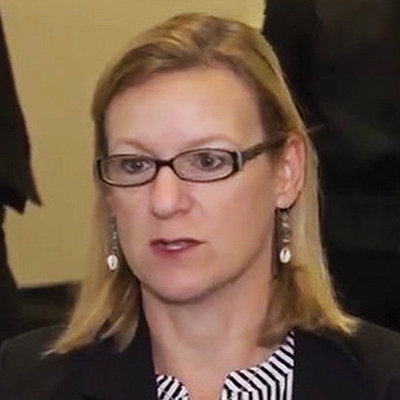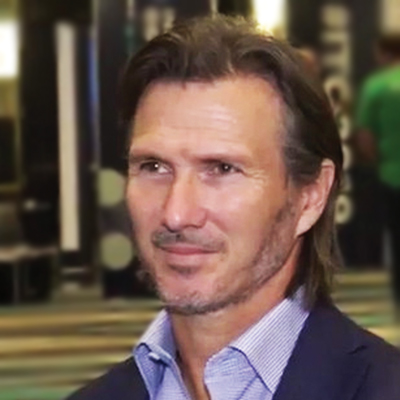Life Insurance
Gaining Insight
Epigenetics can uncover how poor health habits can affect future wellness and is being viewed as a potentially powerful underwriting tool.
Imagine knowing how much alcohol a policyholder drinks or how many cigarettes they smoke based on a saliva sample rather than a questionnaire. With epigenetics, that's possible.
Samantha Chow, senior life and annuity analyst for Aite Group, and Jon Sabes, CEO of YouSurance and Life Epigenetics, spoke with AMBestTV at InsureTech Connect 2019 about epigenetics and its potential impact on life underwriting.
What is epigenetics?
Sabes: The science of epigenetics is the study of the epigenome which is the epidermis, the upper layer of the genome. It's the study of how extrinsic factors, like smoking, like alcohol, impact gene expression. What we're looking at is the current states of health and wellness based on genetic expression. That's a really interesting insight for life insurance underwriting.
How does epigenetics fit into life insurance?
Chow: Obviously, underwriting is the most powerful use case when it comes to epigenetics. Being able to identify the extensive amount of alcohol use, the change in smoking, how that's changed over time, that's one.
Number two would be engagements, something that's after the fact, a testing that's done after the policy has been issued. Any way to engage and help coach on how to improve your health by noting the things that they've seen changed in those epigenetics scores.

We see insurance carriers really moving to this whole wellness factor. Financial wellness doesn’t just include product, wealth and retirement.
Samantha Chow
Aite Group
What are some of the factors you look at in this testing and the insights you gain from it?
Sabes: Our relationship and interest in epigenetics starts with some of the work done by Dr. Steven Horvath out at UCLA. What Dr. Horvath discovered in 2013 is that epigenetics is an amazing predictor of biological aging. It has an incredible signal that is signaling how biology is aging over time.
Really, that's the underlying goal of life insurance underwriting: how are we aging toward all-cause mortality? At that premise, we start to examine epigenetics as a tool for underwriting.
What's interesting and what we learned subsequent to that is epigenetics also tends to pick up a variety of other factors along the current states of health and wellness. We mentioned smoking. An incredibly strong signal as to tobacco use can be found through the epigenome. We're looking at a variety of alcohol health and wellness and disease states.
What we've seen in the scientific literature is some incredible research being done with studies that are associating what we call epigenetic signatures or patterns of DNA methylation that are occurring along the epigenome that are related to cancer, cardiovascular disease, a host of other things that life insurance underwriting cares a lot about.
Is this similar to genetic testing?
Sabes: I would say no, it is not similar to genetic testing. It has the “enetics” word in it. That trips a lot of people up. Genetic testing really is looking at the underlying code of your DNA. That is what you get when you're born. Half from mom and half from dad.
That code is basically static throughout your lifetime. That code will indicate a predisposition for risk of disease, but it really doesn't have any role as to your current disease state.
Epigenetics is the study of how your genes are expressed. An analogy that folks often use is it's like your genetics is your blueprint and your epigenetics is your general contractor. You have a lot of control over managing your general contractor.
If I exercise, if I eat right, if I sleep, my genes tend to express quite well and I tend to look very healthy. If I drink, if I smoke, if I watch an incredible amount of television, my genes tend to express differently. That's really the distinction between genetics and epigenetics.
Are there some concerns around using epigenetics?
Chow: I would say that the first one is the lack of education between what is genetics versus what is epigenetics. They hear that genetics part of it and they think, “Oh, well, this is going to tell someone they've got breast cancer when they may or may not ever have breast cancer.”
That's the first fear of using genetics. What they see in that DNA strand may or may not come to fruition. Judging someone on that. It's the education we first have to get past to make them understand what epigenetics truly is.
The insurance carrier obviously wants to know someone's biological age and how healthy they are. To tell a consumer that their biological age is much less than what they may have expected to live to is a fear of, “Oh, maybe I have not given the best customer experience” or what have you.
But if you flip it around, again, and you use it more as a proactive attempt to help them, to coach them, then you've flipped that negative into a positive. We need to make them understand that it's really about health and wellness more so than just your specific DNA makeup.

What we’re looking at is the current states of health and wellness based on genetic expression. That’s a really interesting insight for life insurance underwriting.
Jon Sabes
YouSurance
What are some of the concerns that you hear?
Sabes: It's fear of the unknown. It's fear of the new. It's fear of change. All of those are very reasonable fears to have. I guess it's been my experience that where technology is responsibly deployed, it's really improved our lives.
We have a unique opportunity in the industry to improve individuals' lives. That's really the baseline role that this technology can serve to play. We've seen individuals have an increasing interest in their own health and wellness.
There's an intuitive curiosity amongst consumers to say, “Why do I develop a particular disease? How is it someone who is, by all means, looking very healthy and going to run their next marathon suddenly dies of a horrible disease?” Or “How is it that two-pack-a-day Charlie is celebrating his 100th birthday? Why is that?”
We all know this intuitively. How can we look at new, more advanced technologies to molecular health and wellness and use these to our collective benefit? From my perspective, there are plenty of reasons to be fearful, but plenty of reasons to be optimistic about how we contribute to society and health and wellness at large.
That's really where we're coming from. We want to be out front with people. They're opting in to receive the benefits of this as opposed to something going on in the background that they have no idea of what this magical technology's doing in an underwriting context.
Chow: We see insurance carriers really moving to this whole wellness factor. Financial wellness doesn't just include product, wealth and retirement.
Today carriers think about it in terms of health and how do I make them healthier, how do I help benefit them to make them think better about themselves. It's global in terms of everybody wanting to be a little bit more healthy and move in that direction. It's a definite trigger to help further that.
Sabes: Imagine longitudinal testing where people come into a product when they're 30 and where the science will be when they're 40. If we have a baseline measure of them at 30 and where the science will be at 40, at 50, or at 60, where the products can evolve to meet the consumers where they're at in their lives for the relevant needs that they have.
Is this something that would be used at the beginning of a policy when it's being underwritten and then used again years later? Would policyholders be tested throughout the life of a policy?
Sabes: That's all in the works right now. You're seeing models of engagement. The carriers are very interested. They recognize they missed it in terms of consumer engagement. How are you going to engage? What is the technology? What's the basis? We think that this is a baseline technology that serves engagement in a meaningful way. I can't imagine where the tech is going to be. I can't imagine that it is where it is today, let alone where it's going to be in 10 years. Remember, 10 years ago, I maybe had a cellphone, I certainly didn't have a smartphone.



























